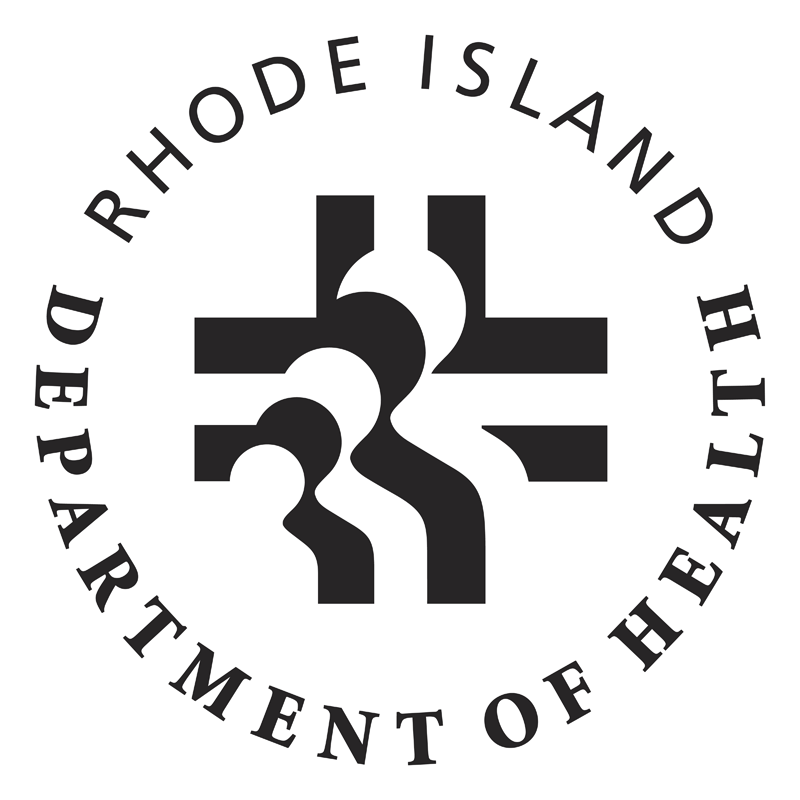Tickborne Disease Data
Purpose
To monitor the epidemiology, incidence and geographic distribution of tickborne diseases.
Collection Period
2018-2023
Key Points
About Lyme disease
- Lyme disease is a tickborne bacterial disease, causing symptoms such as fever, headache, fatigue, and a characteristic bullseye rash. Late symptoms can include arthritis, neurological problems, and heart disease. Lyme disease can be successfully treated with a course of antibiotics. Lyme disease is transmitted by the blacklegged (“deer”) tick, mostly in upper Midwest and Northeast states, in wooded or grassy areas, and during warm months. More information about Lyme disease
- Data Overview
- Reported cases of Lyme remained stable from 2018-2021, however reported cases increased in 2022 as a result of the Council of State and Territorial Epidemiologists (CSTE) case definition change for Lyme disease.
- In 2023, Rhode Island had 2,852 cases of Lyme disease, with an incidence rate of 260 cases per 100,000 people. The 5-year mean rate for Lyme disease for 2017-2021, reporting years before the CSTE case definition change, was 92 per 100,000 people.
- Washington County consistently has the highest rate of Lyme disease in Rhode Island with a rate of 734 cases per 100,000 people in 2023. The five-year mean rate for Lyme disease in Washington County for 2017-2021, reporting years before the CSTE case definition change, was 204 per 100,000 people.
- Most Lyme disease cases are reported during the summer months, with a peak observed during July.
About Anaplasmosis and Ehrlichiosis
- Anaplasmosis and ehrlichiosis are tickborne, bacterial diseases that typically cause fever, headache, fatigue, and muscle aches one-two weeks following a tick bite. Anaplasmosis is most common in the upper Midwest and Northeast states, corresponding with the geographical distribution of Lyme disease. Co-infections are possible as the blacklegged (“deer”) tick that carries the bacteria can also transmit Lyme disease and babesiosis. Ehrlichiosis is most common in the Southeast and Southcentral US, corresponding with the geographical distribution of the Lone Star tick which transmits the disease. However, the range of the Lone Star tick has been expanding and these ticks have been found in Rhode Island and other Northeast states. More information about Ehrlichiosis
- Data Overview
- In 2023, Rhode Island had 84 cases of anaplasmosis, with a rate of 7.6 cases per 100,000 people, and 6 cases of ehrlichiosis. This calculates to a combined 90 cases, with a combined rate of 8.2 cases per 100,000 people.
- The five-year mean for combined anaplasmosis and ehrlichiosis cases for 2019-2023 is 126.2 cases, with a five-year mean rate of 11.5 cases per 100,000 people.
- In 2022, RIDOH implemented the CDC case report form for Tickborne Rickettsial Diseases deployed for use in 2020, which isolates the patient clinical evidence of disease used for identifying case status in accordance with the CSTE case definition.
- Anaplasmosis and ehrlichiosis occur consistently at the highest rate in Washington County.
- The majority of anaplasmosis and ehrlichiosis cases are reported during the summer months, with a peak observed during June and July.
About Babesiosis
- Babesiosis is a tickborne, parasitic disease caused by protozoa. Symptoms range from subclinical to life-threatening and mimic malaria, appearing one to nine weeks after the bite of an infected blacklegged (“deer”) tick. Many infected people have no symptoms; others experience flu-like symptoms such as fever, chills, sweats, headache, body aches, loss of appetite, nausea, or fatigue. Ticks that carry babesia are the most commonly found and cause disease in the Northeast and upper Midwest states, in wooded or grassy areas, and during warm months when they are in their nymphal life stage. More information about Babesiosis
- Data Overview
- In 2023, there were 242 cases of babesiosis in Rhode Island, with an incidence rate of 22.13 cases per 100,000 people.
- Babesiosis is most commonly reported in older male adults, and Washington County has the highest case rate with a 2023 rate of 60.8 cases per 100,000 people.
- Babesiosis in Rhode Island peaks in the summer months, with 84% of cases occurring between June and August in 2023.
Data Source
Extracted from Rhode Island National Electronic Disease Surveillance System in September 2024. Probable and confirmed cases are based on lab results reported to the Rhode Island Department of Health.
Data Notes
 Rhode Island Department of Health
Rhode Island Department of Health Rhode Island Department of Health
Rhode Island Department of Health